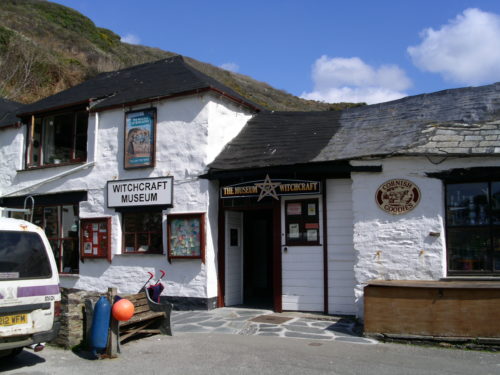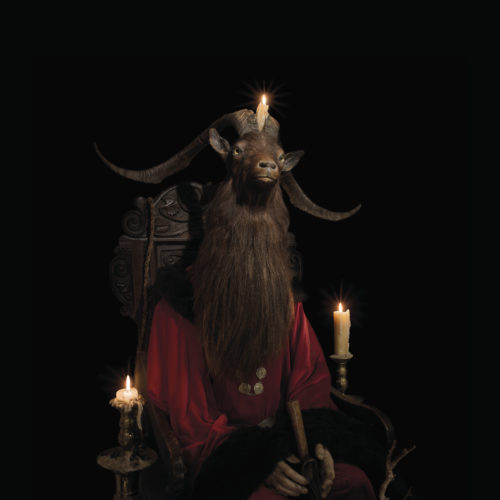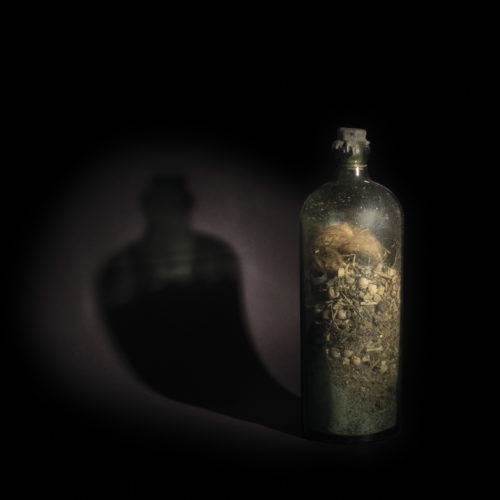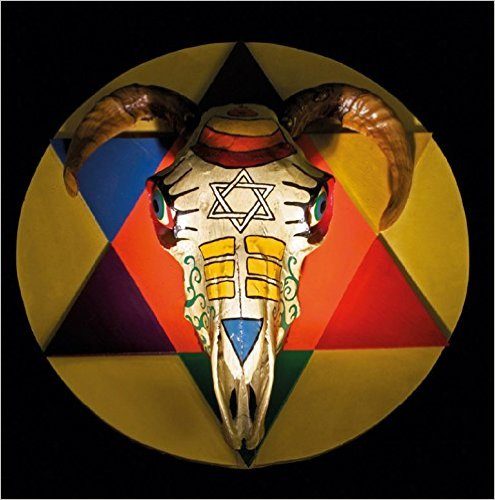BOSTCASTLE, Eng. — The Museum of Witchcraft and Magic in Cornwall, the south-western corner of the Isle of Britain, has been a rich repository of artefacts and lore since 1960. Its collection has grown to more than 3,000 objects and some 7,000 books to cement it as a place of pilgrimage for Pagans of all stripes and a curious draw for tourists visiting the fishing village.

[Courtesy Photo]
Of Shadows is a project by photographer Sara Hannant, who was inspired by the exhibits when she began an artist’s residency at the museum in 2013. Crucially, she has captured a sense of mystery and atmosphere by shooting the objects at night.
Sara explains: “It was best to photograph at night. This enabled the objects to emerge from the darkness, where it is said magic begins.
Superstition and magic have encircled photography from the beginning. In many cultures the word for photography or photographer translates as ‘soul taker,’ ‘shadow catcher’ or ‘face stealer.’
“The camera itself was perceived as a magical object and photographs were thought to possess supernatural powers.”

Baphomet [Courtesy Image]
But Graham King, who was director from 1996 to 2014, removed the tableaux and changed the figure to represent Baphomet. The velvet robe that the model wears belonged to the late magical practitioner Chris Gosselin.
What perhaps might be considered most interesting about the book, however, is its evocation of the traditions of everyday folk. A good example is the Kern Baby, made from the last sheaf of corn gathered at the end of the harvest period in Northumberland and occasionally dressed in a child’s christening gown. Sometimes, they would be kept and then burnt before sowing time, the ashes scattered over the fields to ensure a good harvest for the coming year.

Kern Baby in white dress [Courtesy Image]
“This was generally contrived to fall into the hands of one of the finest girls in the field, was dressed up with ribands, and brought home in triumph with the music of fiddles or bagpipes. A good dinner was given to the whole band, and the evening spent in joviality and dancing, while the fortunate lass who took the Maiden was the Queen of the Feast; after which this handful of Corn was dressed out generally in the form of a Cross, and hung up with the date of the year, in some conspicuous part of the house.”
Another image that resonates with the popular image of witchcraft is the Poppet, used for casting spells on an individual or assisting them through magic.The insertion of iron nails into the one in Sara’s picture reveals a clear intention to inflict pain and suffering – for a woman created it as an effigy of a restaurant owner who got her daughter pregnant.
![Nail Man Poppet [Courtesy Photo]](https://wildhunt.org/wp-content/uploads/2017/01/Nail-Man-Poppet-500x500.jpg)
Nail Man Poppet [Courtesy Image]
A surprising number of these bottles have survived, predominantly from the 17th and 18th century, and they are still made by magical practitioners today.

Healing Bottle [Courtesy Image]
Such treatment is not only befitting of the material but provides a welcome testament to the efforts of all of those who have helped the museum grow over the years – and saved it and its contents from disaster.
When the UK was battered by ferocious storms in August 2004, Boscastle was especially hard-hit and experienced major flooding. The museum, which is close to the harbour, faced disaster. Graham King, the director at the time, organised efforts to protect most of the museum’s artefacts. In the aftermath, the museum team carried out a dedicated clean-up operation and the building reopened with new exhibition spaces.
But while its location in Boscastle comes with such risks, it seems the museum could not have been sited elsewhere. Williamson said of his choice of location: “Three miles away from this spot you can find this pre-historic maze stone carved into a living rock face, proof that from ancient times man and his magic making with the world of spirit were active in this area.
“The centuries have passed and times have changed and yet all around us in this quiet corner of England there is a strange feeling that we are not alone and that the shades of persons passed on and over into the world of spirit are very close. That is why this Museum of Witchcraft is located here. One is standing on the edge of the beyond.”

Of Shadows by Sara Hannat and Simon Costin
So even if a visit to this magical site remains some way off, you can still step into the beyond with a virtual tour of some of its highlights, courtesy of Of Shadows, and the work of Sara Hannant and Simon Costin.
The Wild Hunt is not responsible for links to external content.
To join a conversation on this post:
Visit our The Wild Hunt subreddit! Point your favorite browser to https://www.reddit.com/r/The_Wild_Hunt_News/, then click “JOIN”. Make sure to click the bell, too, to be notified of new articles posted to our subreddit.
Marvelous.